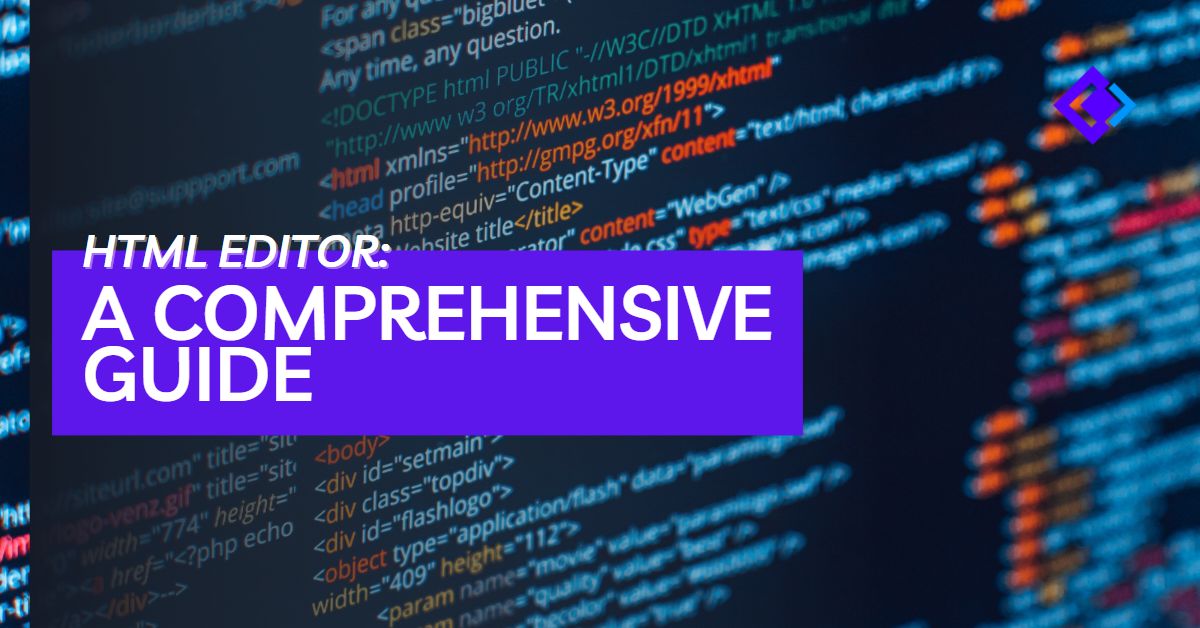HTML (Hypertext Markup Language) is a fundamental building block of the internet, and HTML editors are a crucial tool for anyone who wants to create and edit web pages. HTML editors make it easy to write, edit and test HTML code, as well as to create visually appealing and responsive web pages. In this article, we will discuss HTML editors in detail, including their types, features, and popular options, and how to choose the right one for your needs.
Types of HTML Editors
HTML editors can be broadly classified into three categories: text editors, visual editors, and integrated development environments (IDE). Text editors are simple, lightweight editors that are primarily designed for coding. They have features such as syntax highlighting, auto-indentation, and code completion but lack the visual interface of a WYSIWYG (What You See Is What You Get) editor. Visual editors, on the other hand, offer a visual interface that allows you to drag and drop elements and create web pages without having to write code manually. IDEs combine the functionality of text editors and visual editors and offer advanced features such as debugging tools, project management, and code collaboration.
Features of an HTML Editor
HTML editors come with a wide range of features that make it easy to write, edit and test HTML code. Some of the most important features of an HTML editor include:
- Code highlighting and formatting: This feature highlights the syntax of your code and makes it easier to read and understand. It also helps you to identify errors and typos quickly.
- Auto-completion: This feature automatically completes code snippets, tags, and attributes as you type, saving you time and reducing errors.
- Code hinting: This feature provides suggestions for completing tags and attributes based on the context of your code.
- Live preview: This feature allows you to see the changes you make to your code in real-time as you edit, without having to save and refresh the page.
- Debugging tools: This feature helps you to identify and fix errors in your code by highlighting syntax errors, missing tags, and other issues.
- Plugins and extensions: This feature allows you to extend the functionality of your HTML editor by adding new features and integrations.
- Accessibility features: This feature provides tools to ensure your web page is accessible to all users, including those with disabilities.
Popular HTML Editors
There are many HTML editors available, but some of the most popular ones include:
- Notepad++: Notepad++ is a free, open-source text editor that is popular among developers. It has features such as syntax highlighting, auto-completion, and code folding, making it easy to write and edit HTML code.
- Sublime Text: Sublime Text is a lightweight and customizable text editor that is ideal for coding. It has a wide range of features, including syntax highlighting, code completion, and multiple selections.
- Atom: Atom is an open-source text editor that is highly customizable and easy to use. It has various features, including code highlighting, code completion, and Git integration.
- Visual Studio Code: Visual Studio Code is a powerful IDE that offers a range of features, including debugging tools, code completion, and Git integration. It is highly customizable and easy to use.
- Dreamweaver: Dreamweaver is a visual editor that allows you to create web pages without writing code manually. It has features such as visual editing, code highlighting, and code completion.
- HTML Editor Online: an online simple HTML editor that does what needs to be done for a quick WYSIWYG. No installation is needed.
Choosing the Right HTML Editor
When choosing an HTML editor, there are several factors to consider, including:
- Cost: Some HTML editors are free, while others require a paid subscription. Consider your budget when choosing an HTML editor.
- Ease of use: Consider how easy the editor is to use, especially if you are a beginner.
- Features: Consider the features offered by the editor and whether they meet your needs. Some HTML editors are geared toward developers and offer advanced features, while others are designed for non-technical users and offer a more visual interface.
- Integration with other tools: Consider whether the HTML editor integrates with other tools you use, such as Git or project management software.
- Community support: Consider the size and activity of the editor’s user community, as this can provide access to support, tutorials, and extensions.
Conclusion
HTML editors are essential tools for anyone who wants to create and edit web pages. Whether you are a developer or a non-technical user, there is an HTML editor that will meet your needs. In this article, we discussed the different types of HTML editors, their features, and some popular options. When choosing an HTML editor, consider factors such as cost, ease of use, features, integration with other tools, and community support. By selecting the right HTML editor, you can save time, reduce errors, and create visually appealing and responsive web pages.

Leave a Reply